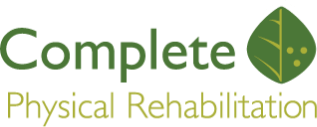Research Shows That Stretching Is Just as Important As Exercise
It is an unfortunate truth that Americans are not getting enough physical activity. Healthy adults should aim for at least 150 minutes of moderate physical activity per week.
If you are trying to become more active, preparing a regular exercise routine of your own is a great place to start. However, you mustn’t forget one of the most important parts of healthy exercise in your new routine: stretching! A few minutes of gentle “cool-down” exercises and flexibility training can make a huge difference in how well your body responds to your new routine.
You have likely noticed how amazing a big stretch can feel after waking up in the morning or after intense physical activity. That rewarding feeling only scratches the surface of the numerous health benefits to be had from regular stretching.
That’s why at our physical therapy practice, we constantly recommend various stretching exercises to complement our comprehensive treatment plans. Feel free to contact our highly trained physical therapist at Complete Physical Rehabilitation.
So why is stretching so important?
The key to good health is to keep your body flexible, as many common aches and pains stem from tight muscles and poor movement. Flexibility training helps your circulatory, respiratory, lymphatic, and musculoskeletal systems.
Flexible tissues receive more oxygen and are better able to move blood and lymphatic fluids throughout the body. And proper circulation helps you feel energized, relieves pain, and allows you to perform daily tasks without extreme fatigue.
Stretching is also important for dedicated athletes, weekend warriors, or anyone looking to improve their physical performance. Sometimes, individuals do not feel the need to stretch after a workout, since their muscles don’t feel particularly achy or sore. However, this is not a good routine to get into and can lead to harmful side effects.
If you are not devoting some of your exercise time to stretching, you can begin to experience stiffness in your joints. Muscles and tendons that aren’t stretched properly after exercise are also more susceptible to injury.
Here are three specific reasons why you should include stretching in your workout:
1: Your body will learn how to maintain a healthier heart rate
One of the many advantages of moderate exercise is its ability to raise your heart rate for extended periods. This period of controlled stress strengthens the cardiac muscle, improves circulation, and delivers more oxygen to your muscles.
Once a workout is over, your body begins to return to homeostasis (its natural resting state). However, if you attempt to leave an exercise or physical therapy session too soon, you may end up with a pounding heart, abnormal blood pressure, and a feeling of dizziness/disorientation.
Post-exercise stretches are called “cool-downs” for a reason. They slowly and gently restore your vital signs to normal levels and prevent too-rapid blood pooling and lightheadedness that could lead to a serious fall or accidental injury.
You can rest assured knowing that, after vigorous exercise, your physical therapist will always guide you through cool-down stretches to ensure that you receive the maximum benefits from your workout without any of the unwanted and painful post-workout side effects.
2: Releasing lactic acid and eliminating soreness
You are likely familiar with the gnawing ache that can develop in your muscles as you exercise. But, did you know that sensation is caused by the presence of lactic acid? Lactic acid is a natural byproduct of muscular exertion and develops alongside another metabolic waste product called hydroxyproline.
You don’t want these toxins lingering around in your muscles – but that’s exactly what they’ll do until you evict them with some post-workout stretches.
The longer these compounds remain in your tissues, the more soreness you’ll feel in the hours and days following your workout.
Skipping your cool-down stretches might help you get out of the gym a little faster, but the resulting pain you’ll experience is certainly not worth it- and you might even have to delay or reduce your next workout as a result.
3: Future injury prevention
When you start exercising, either on your own or as part of a physical therapy program, you want to leave your sessions feeling a sense of pride, accomplishment, or relief– not a new kind of pain thanks to a strained muscle. But this is what could happen if you stop exercising too abruptly, without any cool-down stretches.
As you exercise, your muscles are continuously pulling tightly against tendon attachments. Even after you stop exercising, those tissues remain stiff and tight, making strains, sprains, and the development of chronic inflammatory pain more likely.
Stretching causes the tissues to relax and return to their former length, restoring their suppleness and reducing the risk of post-workout injury.
Begin optimizing your exercise routine today
When you’re new to regular exercise, it can be easy to neglect post-workout stretching.
If you are trying to become more active to combat a physical issue like chronic pain, you want your exercise routine to be as seamless as possible. This can’t be achieved without performing a variety of post-workout stretches that target the specific muscles used during your intense movement.
Our physical therapists can safely walk you through these critical movements and help you prevent any further injury or pain to your body. So contact Complete Physical Rehab today!

Dr. James Pumarada is a licensed Physical Therapist and co-owner of Complete Physical Rehabilitation. With over 20+ years of treatment experience, he is a Sports Therapy Certified physical therapist, focusing on treating and training runners of all levels, and is one of the most sought after vestibular therapy specialists in Elizabeth and Jersey City where, along with his wife, Dr. Asha, they specialize in the treatment of all dizziness, vertigo, and imbalance issues.

